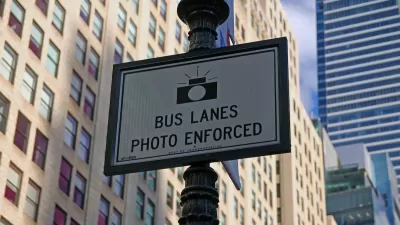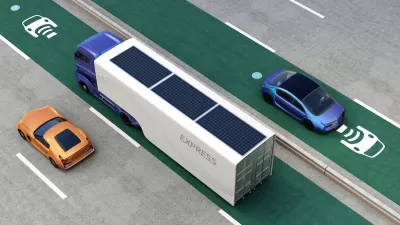On the bus this morning I was handed a survey asking me to detail my satisfaction with the Los Angeles County Metropolitan Transportation Authority's public transit system. As a daily bus commuter, I was more than happy to spend my two cents, but I'm a bit skeptical that those two cents will really do anything.
On the bus this morning I was handed a survey asking me to detail my satisfaction with the Los Angeles County Metropolitan Transportation Authority's public transit system. As a daily bus commuter, I was more than happy to spend my two cents, but I'm a bit skeptical that those two cents will really do anything.
The survey included 29 questions, mostly of the "Yes or No" variety. They asked about things like the relative safety of the bus, its timeliness, its quality, the courtesy of the driver, and other general questions about my personal preferences for and opinions of the system and its service.
There wasn't anything especially groundbreaking about this survey, and though it could have gone into much greater depth, it covered the basic topic areas you'd expect in a service evaluation. For a very simple survey, I think it could reveal some overall trends in the system, most significantly along the lines of timeliness and safety.

One area not covered was ease of use. I'm pretty used to the system, but I think it is incredibly unwelcoming to new or unexperienced riders. In this blog post at Next American City, I get into detail about shortcomings in the system's signage, mapping, and accessibility to new users.
To its credit, the survey did include one question I was very happy to see: "Did you have a car available to make THIS trip?" I said yes, and I'm really curious to see how many other people did, too.
Most of the people the surveyor asked to take the survey obviously speak English as a second or third language. Many of the people I witnessed on my this two-mile leg of my commute, however, were comfortable enough with the language to politely decline to fill out the survey.
About half of the 30-40 riders on my trip filled out the survey, which was printed in both English and Spanish.
The survey collector (who was nicely clad in a bright orange reflector vest) said his independent firm would be surveying riders on every one of the MTA's bus and rail lines. With almost 200 lines throughout the county, they've got plenty of work to do.
I think it's a good idea for transit agencies to try to get this kind of information directly from the people they serve. It should be interesting to see how riders respond to this satisfaction survey, and even more interesting to see what the MTA actually does as a result. But with thousands of paper-and-pencil surveys, and a notoriously politicized and slow-moving planning process, it may be a while before the satisfaction of riders has any justification to increase.

Alabama: Trump Terminates Settlements for Black Communities Harmed By Raw Sewage
Trump deemed the landmark civil rights agreement “illegal DEI and environmental justice policy.”

Study: Maui’s Plan to Convert Vacation Rentals to Long-Term Housing Could Cause Nearly $1 Billion Economic Loss
The plan would reduce visitor accommodation by 25% resulting in 1,900 jobs lost.

Why Should We Subsidize Public Transportation?
Many public transit agencies face financial stress due to rising costs, declining fare revenue, and declining subsidies. Transit advocates must provide a strong business case for increasing public transit funding.

Paris Bike Boom Leads to Steep Drop in Air Pollution
The French city’s air quality has improved dramatically in the past 20 years, coinciding with a growth in cycling.

Why Housing Costs More to Build in California Than in Texas
Hard costs like labor and materials combined with ‘soft’ costs such as permitting make building in the San Francisco Bay Area almost three times as costly as in Texas cities.

San Diego County Sees a Rise in Urban Coyotes
San Diego County experiences a rise in urban coyotes, as sightings become prevalent throughout its urban neighbourhoods and surrounding areas.
Urban Design for Planners 1: Software Tools
This six-course series explores essential urban design concepts using open source software and equips planners with the tools they need to participate fully in the urban design process.
Planning for Universal Design
Learn the tools for implementing Universal Design in planning regulations.
Smith Gee Studio
Alamo Area Metropolitan Planning Organization
City of Santa Clarita
Institute for Housing and Urban Development Studies (IHS)
City of Grandview
Harvard GSD Executive Education
Toledo-Lucas County Plan Commissions
Salt Lake City
NYU Wagner Graduate School of Public Service





























